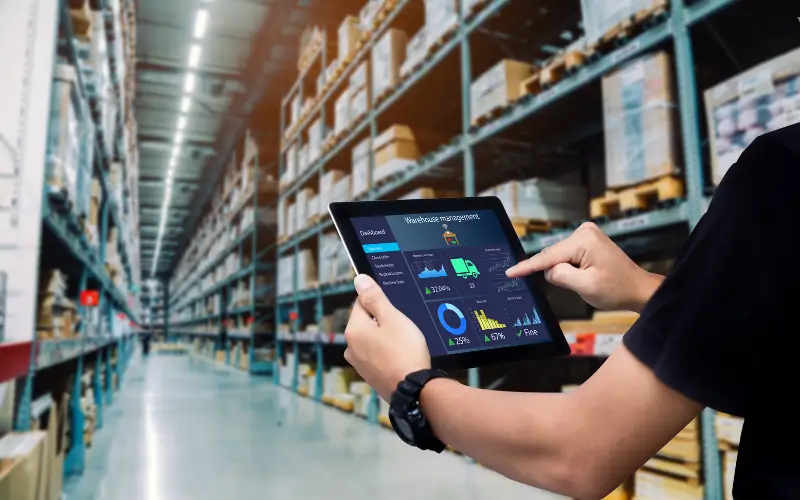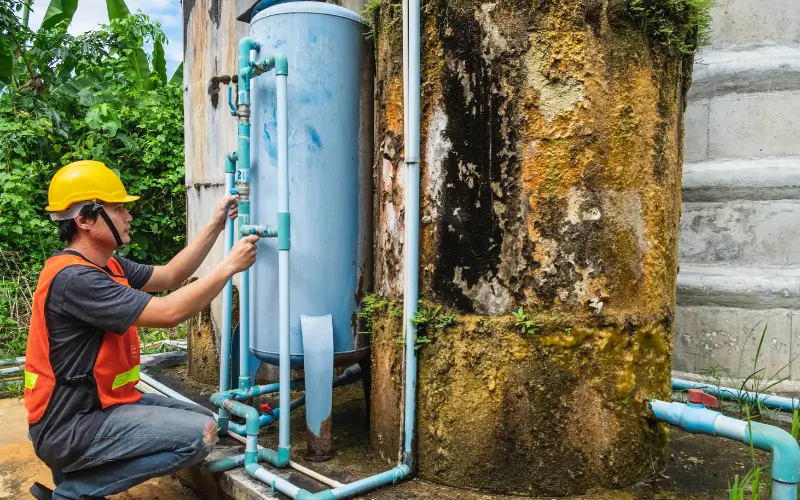In today’s world, where energy consumption is rising and environmental concerns are mounting, businesses and industries face a critical challenge: balancing energy savings with productivity. This balance of Energy Savings vs Productivity, often called the energy productivity tradeoff, refers to the complex relationship between reducing energy use and maintaining or improving operational output.
Energy productivity is a measure of how efficiently energy is converted into productive work or economic value. While cutting energy consumption helps reduce costs and carbon footprints, it sometimes risks slowing down processes, impacting quality, or reducing output—posing a dilemma for managers and engineers alike.
In this article, we’ll explore the concept of energy productivity tradeoff, why it exists, its impacts across various sectors, and most importantly, how to find the optimal balance through smart strategies and technologies. Whether you’re a factory manager, building operator, or sustainability professional, you’ll gain insights on managing energy use without compromising productivity.
Understanding Energy Productivity Tradeoff
Definition of Energy Productivity
Energy productivity refers to the amount of output or value created per unit of energy consumed. Unlike simple energy efficiency, which focuses solely on minimizing energy use, energy productivity measures how effectively that energy is used to generate economic or operational results. For example, in manufacturing, it could be the number of units produced per kilowatt-hour (kWh), while in commercial buildings, it might relate to services delivered relative to energy consumed.
What is the Tradeoff?
The energy productivity tradeoff describes the tension between saving energy and maintaining or improving productivity. In many cases, aggressive energy-saving measures—like lowering heating/cooling setpoints, reducing machine run times, or dimming lights—can lead to slower production rates, decreased output quality, or discomfort for occupants and workers. On the other hand, prioritizing productivity without regard to energy use can lead to wasted resources, higher costs, and increased environmental impact.
Why Does This Tradeoff Exist?
Several factors contribute to this tradeoff:
- Technical Limitations: Some energy-saving technologies or strategies may reduce the operational speed or capacity of equipment.
- Process Constraints: Processes often have minimum energy requirements to maintain quality or safety standards.
- Economic Pressures: Balancing immediate cost savings with long-term productivity gains can be challenging.
- Human Factors: Employee comfort and behavior can influence both energy consumption and productivity outcomes.
Understanding these factors is essential to designing solutions that minimize the negative impacts of the tradeoff and maximize benefits.
The Impact of Energy Savings on Productivity
Positive Effects of Energy Savings
Energy savings can bring several benefits that positively influence productivity:
- Cost Reduction: Lower energy bills free up capital that can be reinvested in improving processes, training, or technology upgrades.
- Sustainability and Corporate Responsibility: Demonstrating commitment to energy efficiency can enhance brand reputation and employee morale, indirectly boosting productivity.
- Long-Term Innovation Gains: Implementing energy-saving technologies often leads to modernization and process improvements that raise productivity over time.
Negative Effects or Risks
However, energy savings can sometimes negatively affect productivity if not managed carefully:
- Reduction in Output or Quality: For example, cutting machine operating hours or reducing HVAC performance might slow production lines or affect product quality.
- Equipment Limitations: Some energy-efficient devices may not perform at full capacity or could require longer setup times.
- Employee Comfort and Performance: Lowering lighting levels or indoor temperatures to save energy can reduce worker comfort, focus, and efficiency.
Recognizing these potential impacts allows organizations to make informed decisions and develop strategies that mitigate risks while maximizing energy savings.
Sectors Most Affected by Energy-Productivity Tradeoffs
Manufacturing Industry
The manufacturing sector often faces the most direct and visible energy-productivity tradeoffs. Factories rely heavily on machinery that consumes significant energy. For instance, running equipment at lower speeds or shutting down non-essential machines can reduce energy consumption but may also reduce output or delay order fulfillment. Several case studies show that while energy retrofit projects can lower costs, without careful planning, they risk production bottlenecks.
Commercial Buildings and Offices
In office environments, energy savings usually target HVAC systems, lighting, and office equipment. Reducing heating, cooling, or lighting to save energy can affect employee comfort and productivity. For example, dimming lights or setting thermostats at extreme temperatures may cause discomfort, reduced concentration, or increased absenteeism, highlighting the need for balanced approaches.
Data Centers and IT Operations
Data centers consume massive amounts of energy primarily for cooling and powering servers. Energy-saving measures such as raising cooling setpoints or implementing advanced cooling technologies can save energy but must not compromise uptime or processing speed. The delicate balance here is critical because any reduction in performance directly impacts service levels.
Agriculture and Food Processing
These sectors use energy-intensive equipment like refrigeration, irrigation pumps, and processing machinery. Energy-saving strategies must ensure food safety and process integrity. For example, cutting energy in refrigeration can jeopardize product quality, while reduced irrigation pumping may affect crop yields, making tradeoffs highly sensitive.
Strategies to Balance Energy Savings and Productivity
Energy Audits and Data-Driven Decisions
Conducting comprehensive energy audits helps identify where energy is wasted without hurting productivity. By analyzing consumption patterns and operational workflows, businesses can pinpoint inefficiencies and target improvements that minimize negative impacts on output.
Technology Solutions
- Smart Automation and IoT: These technologies allow real-time monitoring and control of energy use, enabling adjustments that save energy during low-demand periods without affecting production.
- Energy-Efficient Equipment: Investing in high-performance, energy-saving machinery ensures processes run effectively while consuming less energy.
This principle is particularly evident in large-scale applications like sports facilities, where traditional lighting systems consume vast amounts of energy and require significant maintenance. Modern advancements in illumination technology, such as LED sports lighting, offer a compelling solution.
These systems not only drastically cut down on electricity usage but also provide superior light quality and instant illumination, eliminating warm-up times. For a detailed comparison on LED sports lights VS metal halide sports lights, understanding the long-term benefits in terms of operational efficiency and athlete performance is crucial. Such upgrades represent a strategic investment that enhances both environmental sustainability and user experience.
Employee Engagement and Training
Educating employees about energy conservation practices and involving them in setting energy goals can encourage behaviors that reduce consumption without lowering productivity. For example, turning off unused equipment and optimizing workflows.
Process Optimization
Applying lean manufacturing principles or process redesigns can streamline operations, reducing energy waste while maintaining or even improving throughput.
Maintenance and Upkeep
Regular equipment maintenance ensures machines operate efficiently and reliably, preventing energy losses due to wear and tear and avoiding unexpected downtime that affects productivity.
Tools and Metrics for Measuring the Tradeoff
Energy Performance Indicators (EnPIs)
EnPIs are specific metrics that track energy consumption relative to production output, such as kWh per unit produced. These indicators help organizations monitor energy efficiency while considering productivity levels.
Productivity Metrics
Measuring productivity through output rates, quality levels, or economic value generated allows comparison against energy consumption to assess tradeoffs.
Integrated Dashboards for Monitoring
Combining energy and productivity data into unified dashboards provides real-time visibility, helping managers make informed decisions that balance both factors effectively.
Benchmarking Best Practices
Comparing performance against industry standards or similar organizations helps identify opportunities to improve energy productivity without sacrificing output.
Real-World Case Studies
Successful Balance Examples
Company A implemented an energy retrofit that upgraded lighting and HVAC systems with smart controls. By carefully monitoring production schedules and adjusting settings during non-peak hours, they achieved a 20% reduction in energy use without any loss in productivity. Employee feedback also showed improved comfort, demonstrating that energy savings and productivity gains can coexist.
Lessons from Failures or Challenges
In contrast, Company B tried to reduce machine operating times to save energy but neglected process analysis and employee input. This resulted in frequent production delays and lower product quality, which increased operational costs. The experience highlighted the importance of data-driven decisions and stakeholder engagement to avoid unintended consequences.
Future Trends and Innovations
Advances in Energy Management Systems
Next-generation energy management systems are becoming more sophisticated, integrating AI and machine learning to predict energy demand and optimize consumption without compromising productivity. These systems can dynamically adjust operations in real-time for maximum efficiency.
Role of AI and Machine Learning
Artificial intelligence helps analyze vast amounts of operational and energy data, identifying patterns and opportunities to fine-tune processes. Predictive maintenance powered by AI can reduce downtime and energy waste simultaneously.
Renewable Energy Integration and Productivity Impact
As renewable energy sources like solar and wind become more common, businesses face new challenges and opportunities. Integrating renewables can reduce energy costs and emissions, but requires smart management to maintain reliable productivity given the variable nature of these sources.
Conclusion
Balancing energy savings with productivity is a nuanced challenge faced by industries worldwide. Understanding the energy productivity tradeoff helps organizations recognize the potential risks and benefits of energy-saving measures. By leveraging data-driven audits, embracing smart technologies, engaging employees, and optimizing processes, businesses can find a harmonious balance that reduces costs and environmental impact without sacrificing output or quality.
A tailored approach that considers the unique needs of each sector and operation is essential. The future promises even smarter energy management solutions powered by AI and renewables, offering new ways to enhance both energy efficiency and productivity.
Start assessing your organization’s energy-productivity balance today to unlock sustainable success.
FAQs
What is the energy productivity tradeoff?
It’s the balance between reducing energy consumption and maintaining or improving productivity, acknowledging that saving energy can sometimes impact output or quality.
How can energy savings hurt productivity?
Energy-saving actions like lowering machine run times or HVAC settings might slow production or reduce worker comfort, affecting performance.
What industries face the biggest challenges with this tradeoff?
Manufacturing, commercial buildings, data centers, and agriculture commonly deal with energy-productivity tradeoffs.
What are some effective ways to balance energy savings and productivity?
Using energy audits, smart technologies, employee training, process optimization, and regular maintenance can help maintain productivity while saving energy.
Can technology help improve both energy efficiency and productivity?
Yes, innovations like IoT, AI-driven management systems, and energy-efficient equipment enable smarter balancing of these goals.
How do you measure energy productivity?
By comparing energy consumption metrics (like kWh) with productivity metrics (units produced or value generated), often using Energy Performance Indicators.
Are there examples of companies successfully managing this balance?
Yes, many organizations have improved energy efficiency without sacrificing productivity through careful planning and technology adoption.




